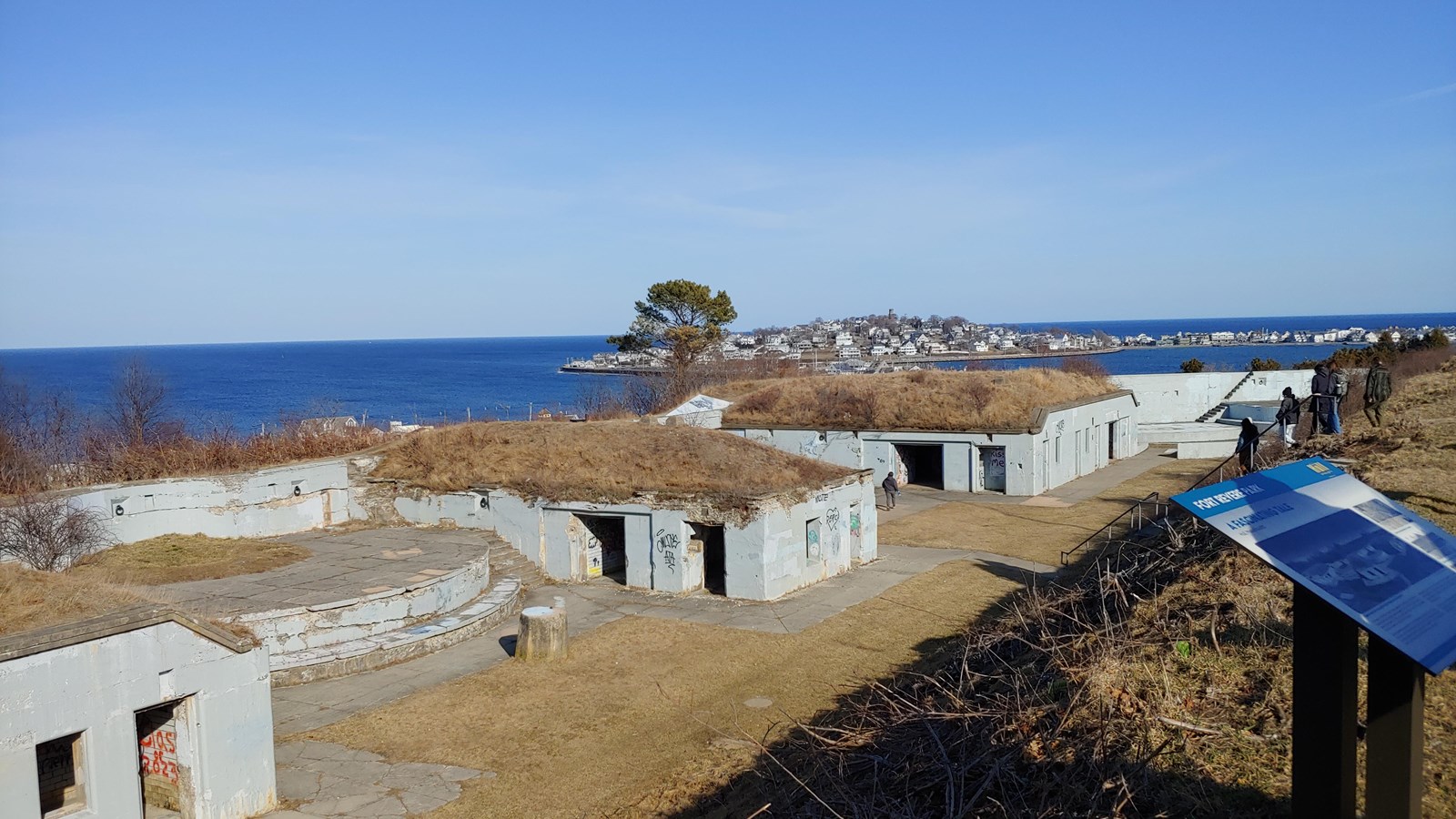Last updated: January 8, 2025
Place
Fort Revere

Student Conservation Association photo, G. Bsales
Fort Revere stands on Telegraph Hill in Hull. The fort played an important role in the defense of Boston Harbor throughout history, from the colonial era to World War II.
Telegraph Hill served as a defensive point in the harbor, even before the construction of Fort Revere. In the late 1600s, colonists frequently used the hill was as a lookout point. Later, during the Revolutionary War, an earthen fort called Fort Independence was constructed on the hill. French Admiral d’Estaing directed the Fort during the war. Fort Independence also acted as a grave site for over 200 French soldiers who had died of smallpox following a prisoner exchange with the British army.
Fort Revere was constructed on Telegraph Hill in the late 1800s to defend Nantasket shipping routes. During World War I, the US military primarily used Fort Revere for training soldiers before sending them to Europe. Following the end of the war, in 1923, the fort was later put under maintenance status, during which there was only a small crew was stationed in the fort to maintain it.
During the leadup to the US’s involvement in World War II, the military expanded defenses and facilities of the fort, including the installation of a submarine net and shoreline barricades. After the war, in 1945, Fort Revere was again placed under maintenance status and many of the facilities and guns were dismantled and removed. In 1950, the US military sold most of the land of Fort Revere, some of which was subdivided for housing development.
Fort Revere Park, operated by the Department of Conservation and Recreation, still preserves several of the fort’s structures including the water tower, some of the batteries, and the officer’s quarters, which now houses a museum on the fort’s history. A few of Fort Revere’s other buildings have remained intact and were repurposed for housing, while much of the rest of the fort has been demolished for additional housing and Hull High School.
Contributed by: Greg Bsales, SCA Historic Preservation Corps Crew Member
Sources:
Butler, Gerald W. The Guns of Boston Harbor. Bloomington, IN: 1stBooks, 2001.
Butler, Gerald. The Military History of Boston’s Harbor Islands. Charleston, SC: Arcadia Publishing, 2000.
"Fort Revere History Page." Fort Revere-Fort Independence Park Preservation Society. Accessed Sep 4, 2024.
